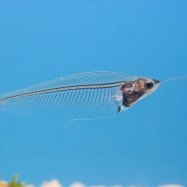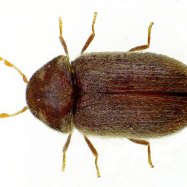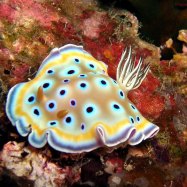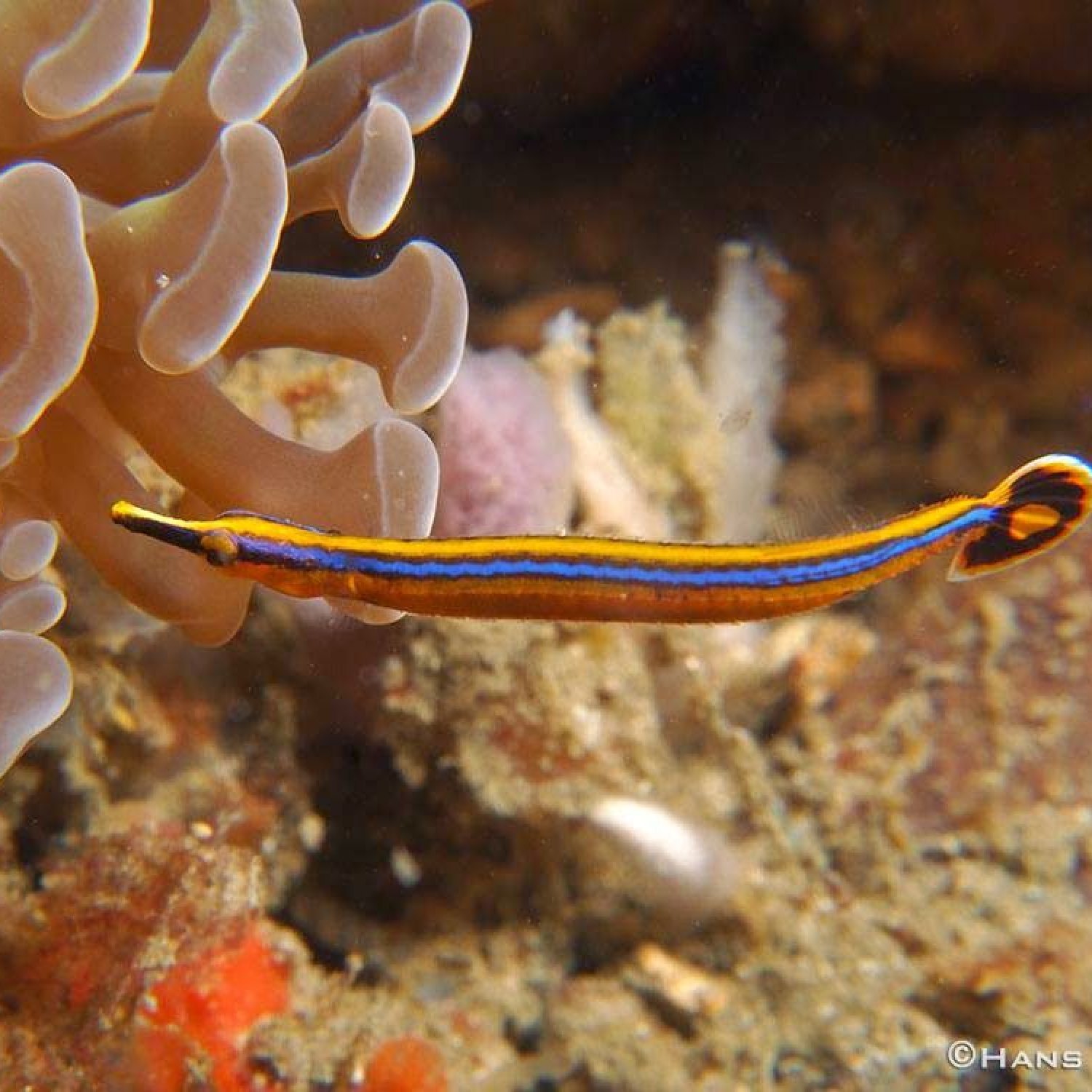
Pipefish
2 to 14 inches
Pipefish, also known as snakefish, are fascinating creatures found in the ocean, seas, and estuaries. With a long and slender body, they belong to the Syngnathidae family and can grow from 2 to 14 inches in length. Despite their name, pipefish are not related to snakes but are closely related to seahorses and sea dragons. These unique creatures are a sight to see in their natural habitat. #pipefish #ocean #sealife
Animal Details Summary:
Common Name: Pipefish
Kingdom: Animalia
Habitat: Marine
The Enigmatic Pipefish: A Long and Slender Beauty of the Ocean
The ocean is a place of endless wonder and mystery, filled with creatures both strange and beautiful. Among these creatures is the elusive pipefish, a member of the Syngnathidae family that is often overlooked in the vastness of the ocean. But make no mistake, this long and slender beauty is anything but ordinary.Also known by its scientific name Syngnathidae, the pipefish is a fascinating creature that belongs to the kingdom Animalia and the phylum Chordata Pipefish. They are classified in the class Actinopterygii, which includes all ray-finned fishes, and the order Syngnathiformes, which also includes the famous seahorses and seadragons.
Found in marine environments all around the world, the pipefish is a carnivorous animal that feeds on a variety of small marine organisms such as copepods, amphipods, and plankton. They are known to consume their prey whole by sucking them in with their small, toothless mouth.
While they have a worldwide distribution, pipefish can be found in different countries such as Australia, Japan, India, and the United States, among others. They are most commonly found in shallow waters in oceans, seas, and estuaries, where they can easily camouflage and hide among corals, seagrasses, and other plants.
One of the unique characteristics of pipefish is their coloration, which varies greatly by species. Some are brightly colored in shades of red, yellow, and orange, while others are more subdued with a mottled pattern. This allows them to blend in with their surroundings, making it easier to hide from predators.
In terms of physical appearance, the pipefish can range in size from 2 to 14 inches, with the majority of species falling within the 8 to 10-inch range Paradise Flying Snake. Their body shape is distinctive, with a long and slender body that resembles a pipe - hence their name. This body shape, along with their coloration, gives them excellent camouflage and makes them hard to spot in the water.
But it's not just their appearance that makes pipefish a fascinating creature. They also have some unique behaviors and adaptations that set them apart from other marine animals.
For starters, unlike most fish that swim in a horizontal position, pipefish swim vertically with their heads facing downwards. This is because their bodies are designed for slow-moving currents, and this swimming posture allows them to use less energy and stay in one spot for longer periods.
One of the most remarkable adaptations of pipefish is their reproductive system. Similar to their seahorse relatives, male pipefish carry and give birth to the offspring. The female pipefish deposits her fertilized eggs into the male's pouch, where they are kept until the hatchlings are ready to emerge. This process can take several weeks, depending on the species.
The pipefish's reproductive system has caught the attention of researchers and scientists interested in understanding the evolution of parenting roles in the animal kingdom. It's a truly unique phenomenon that continues to captivate the scientific community.
Aside from their reproductive system, pipefish also have another distinct adaptation - their snout. The snout of a pipefish is long and thin, with a tubular shape that is perfect for capturing prey. It acts like a straw, allowing the pipefish to suck in their food effortlessly.
The pipefish's snout also plays a role in courtship and mating. In some species, males have brightly colored snouts, which they use to attract females during mating season. This display is a beautiful sight to behold as the males dance and show off their colorful snouts, hoping to woo a potential mate.
In addition to their unique physical attributes and behaviors, pipefish also play an essential role in their ecosystem. As carnivorous animals, they control populations of small marine organisms such as plankton, helping to maintain a balance in the ocean's food chain.
Unfortunately, like many marine animals, pipefish are facing increasing threats to their population. Pollution, habitat destruction, and overfishing are some of the biggest challenges they face. What makes matters worse is that pipefish are incredibly vulnerable due to their slow-moving nature and small size. This makes it easy for them to become prey for bigger predators.
Conservation efforts are being made to protect pipefish and their habitats, including creating marine protected areas and implementing fishing regulations. However, it is still crucial for individuals to do their part in preserving the ocean by reducing their carbon footprint and properly disposing of waste.
In conclusion, the pipefish may be a small and often overlooked creature of the ocean, but it is undoubtedly a significant one. From its unique appearance and behaviors to its vital role in the ecosystem, there is so much to learn and appreciate about this enigmatic animal. Let us continue to cherish and protect these beautiful creatures and their home in the vastness of the ocean.

Pipefish
Animal Details Pipefish - Scientific Name: Syngnathidae
- Category: Animals P
- Scientific Name: Syngnathidae
- Common Name: Pipefish
- Kingdom: Animalia
- Phylum: Chordata
- Class: Actinopterygii
- Order: Syngnathiformes
- Family: Syngnathidae
- Habitat: Marine
- Feeding Method: Carnivore
- Geographical Distribution: Worldwide
- Country of Origin: Various
- Location: Ocean, seas, and estuaries
- Animal Coloration: Varies by species
- Body Shape: Long and slender
- Length: 2 to 14 inches
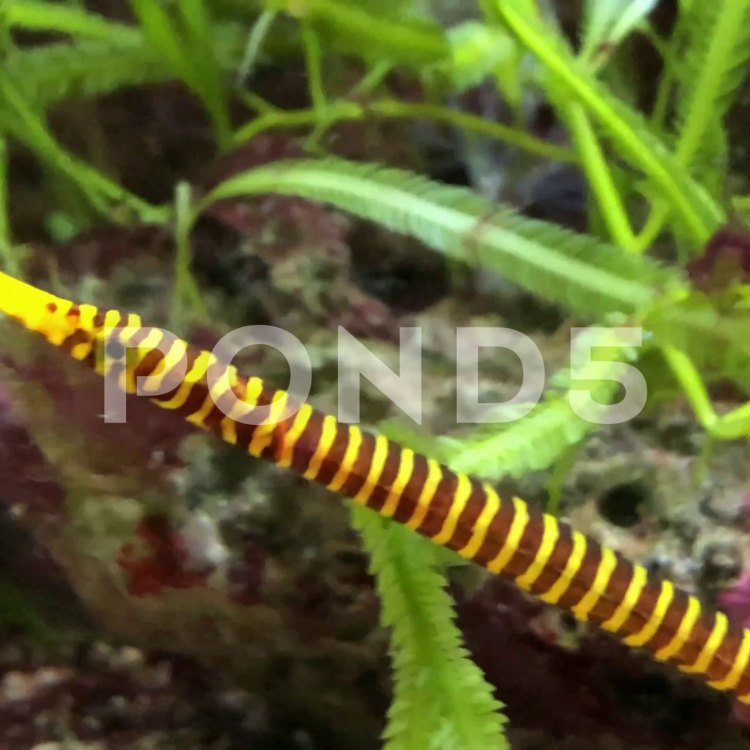
Pipefish
- Adult Size: Depends on species
- Average Lifespan: 1 to 5 years
- Reproduction: Sexual
- Reproductive Behavior: Internal fertilization, males carry eggs
- Sound or Call: No sound production
- Migration Pattern: Varies by species
- Social Groups: Solitary or form small groups
- Behavior: Camouflage and ambush predators
- Threats: Habitat loss, pollution, and overfishing
- Conservation Status: Varies by species
- Impact on Ecosystem: Important predators and prey in marine ecosystems
- Human Use: Aquarium trade
- Distinctive Features: Long snout, tube-like mouth, and armored body
- Interesting Facts: Male pipefish give birth to live young
- Predator: Larger fish and birds
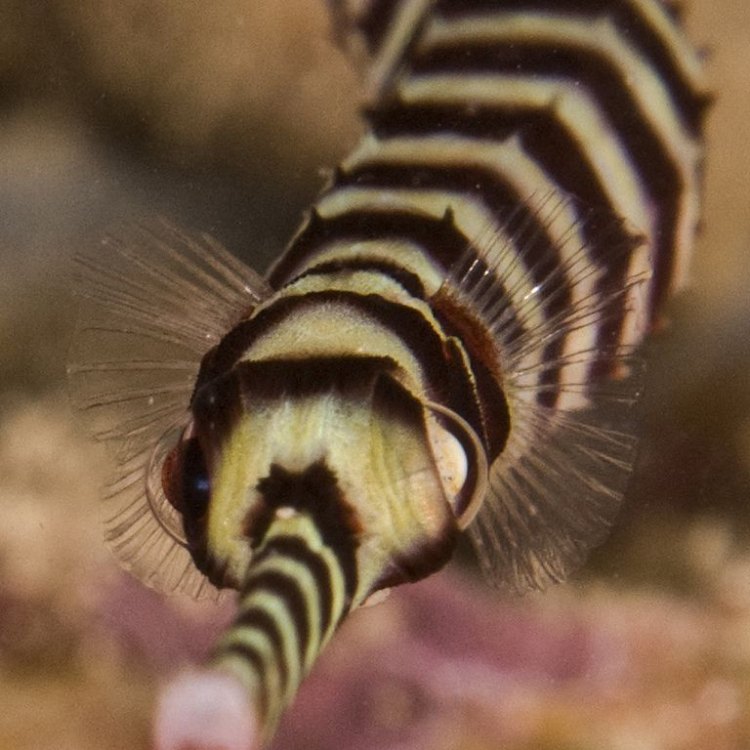
Syngnathidae
The Fascinating World of Pipefish: Masters of Camouflage and Unique Reproduction
The ocean is a vast and mysterious place, filled with countless creatures that continue to surprise and amaze us. One such creature is the pipefish, a close relative of the seahorse that is often overlooked but possesses fascinating characteristics and behaviors.Pipefish belong to the Syngnathidae family, which also includes seahorses and sea dragons. There are over 200 species of pipefish, all varying in size and appearance PeaceOfAnimals.Com. They can range from just a few centimeters to over half a meter in length. Their unique features and behaviors have captured the attention of scientists and marine enthusiasts alike. Let's take a closer look at these intriguing creatures and uncover their secrets.
Anatomy and Physical Characteristics
As mentioned earlier, there is a wide variation in size among different pipefish species. The smallest species, like the dwarf pipefish, reach a maximum size of just 2.5 centimeters, while the largest, the giant or ribbon pipefish, can grow up to 70 centimeters. These size differences are mainly due to the diverse habitats that they inhabit, from shallow coastal waters to the deep sea.One of the most distinctive features of pipefish is their long snout, which is used for capturing prey. Unlike most fish, pipefish do not have a traditional mouth; instead, they have a tube-like mouth that sucks in their food Pied Ball Python. This unique adaptation allows them to feed on tiny crustaceans, fish eggs, and other small invertebrates.
Their bodies are long and slender, resembling sticks or pieces of seaweed. This shape serves as camouflage, helping them blend into their surroundings, making them less noticeable to potential predators. However, their camouflage is not limited to just their appearance. Pipefish also have the ability to change color and pattern, further enhancing their camouflage and making them more difficult to spot.
Another unique feature of pipefish is their armored body. Along their sides and belly, they have overlapping plates, called scutes, which provide protection and structural support. These armored plates also have a dorsal ridge, which may help reduce the drag caused by water currents, allowing the pipefish to move more efficiently through the water.
Reproduction and Parental Care
Pipefish have a fascinating reproductive strategy that sets them apart from other fish species. Similar to their seahorse relatives, pipefish practice internal fertilization. However, what makes pipefish truly astonishing is the role that males play in the reproductive process.The female pipefish deposits eggs into the male's brood pouch, where they are fertilized. The male then incubates the eggs until they are ready to hatch. This process can take anywhere from a few days to several weeks, depending on the species. Once the eggs have hatched, the male pipefish will give birth to live young, which is a remarkable feat in the fish world.
During the incubation period, the male pipefish must continuously maintain the right conditions within the pouch for the eggs to develop correctly. They do this by adjusting the salinity and oxygen levels, as well as providing nutrients through blood vessels in the pouch. This level of care and dedication shown by male pipefish towards their offspring is truly remarkable.
Behavior and Habitat
Pipefish can be found in various types of habitats, from shallow tropical waters to cold, deep-sea regions. Some species, such as the seagrass pipefish, prefer to live close to the bottom, while others, like the blue-striped pipefish, are pelagic, meaning they live in open waters.Their behavior can also differ depending on their habitat. Pipefish that live in areas with dense vegetation, like seagrass meadows, are more likely to be solitary, while those that live in areas with less cover may form small groups. In general, pipefish are primarily solitary, and they do not engage in complex social behaviors like some other fish species.
One of the most intriguing behaviors of pipefish is their hunting strategy. They use their tube-like mouth to create a suction force, pulling in their prey with lightning-fast speed. This ambush tactic makes them swift and efficient predators, allowing them to capture their prey with precision.
Threats and Conservation Status
Like many marine creatures, pipefish face numerous threats, primarily due to human activities. Habitat loss, pollution, and overfishing are the main factors contributing to the decline of pipefish populations. Destruction of seagrass meadows, which are crucial habitats for certain species of pipefish, has severely impacted their populations.The aquarium trade is also a major threat to pipefish, with some species being highly sought after for their unique appearance. However, many pipefish species do not do well in captivity and require specialized care, making them unsuitable for most home aquariums.
The exact conservation status of pipefish varies among species. Some, like the Gulf pipefish, are listed as "Least Concern," while others, such as the dwarf pipefish, are listed as "Vulnerable" on the IUCN Red List. More research is needed to fully understand the threats faced by different species of pipefish and implement effective conservation measures to protect them.
Importance in Marine Ecosystems
Pipefish may not be the most well-known or iconic marine creatures, but they play an essential role in marine ecosystems. As ambush predators, they help keep populations of small crustaceans and other invertebrates in check, maintaining the balance of the food chain. They are also an important food source for larger fish and marine birds, highlighting their role as both predator and prey in the ecosystem.Their habitat also serves as a nursery for many other marine animals, including commercially important fish species. By maintaining healthy populations of pipefish, we are helping to ensure the overall health and stability of marine ecosystems.
Intriguing Facts about Pipefish
Besides their unique reproductive strategy, there are many other fascinating facts about pipefish that make them stand out among other fish species. Here are some interesting tidbits about these creatures:- Some species of pipefish have an elongated, slender appearance, earning them the nickname "straightstick pipefish."
- The snout of pipefish can move independently from their body, giving them more flexibility when catching prey.
- Unlike seahorses, male pipefish do not have a brooding patch (an area of the body with a high density of blood vessels) to nourish the developing eggs. Instead, they have specialized brood pouches.
- Certain species of pipefish have pouches on the sides of their face where they can store extra food for later consumption. These pouches are also used to attract mates during the breeding season.
Predators of Pipefish
Pipefish may use camouflage and swift hunting tactics to avoid being preyed upon, but they are still at risk of being consumed by larger predators. Some of their common predators include larger fish, such as groupers and cod, and sea birds, like gulls and herons. However, the armored plates and flexibility of their bodies provide them with some protection against potential predators.The Astonishing World of Pipefish
Pipefish may not have the flamboyant appearance of their seahorse relatives, but they possess an incredible array of features and behaviors that make them stand out in the fish world. From their long snouts and tube-like mouths to their unique reproductive strategy and role in marine ecosystems, pipefish continue to intrigue and fascinate us.However, with increasing threats and declining populations, it is crucial that we take action to protect these remarkable creatures and ensure their survival for generations to come. We must recognize their significance in marine ecosystems and strive to preserve their habitats and reduce human impacts on their populations. Only then can we continue to marvel at the astonishing world of pipefish.
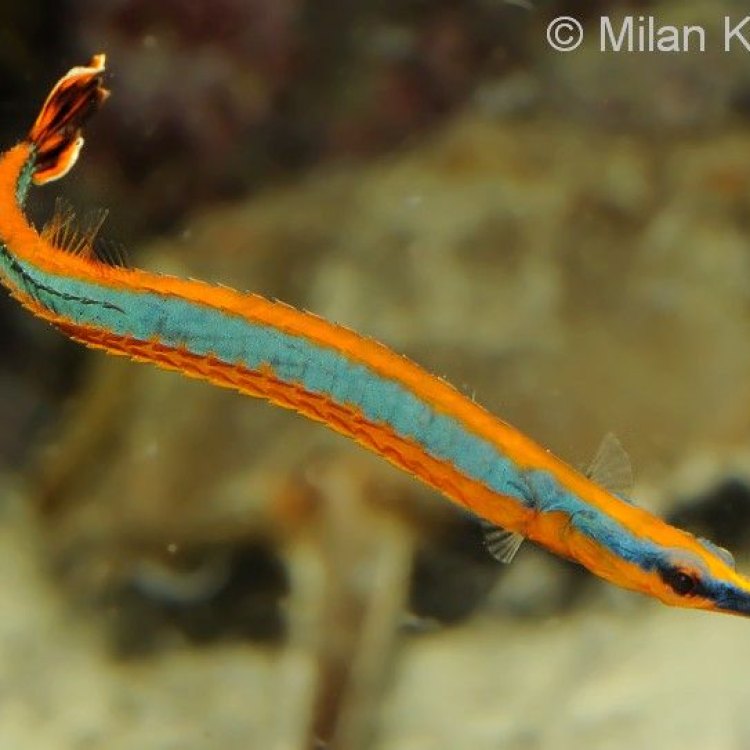
The Enigmatic Pipefish: A Long and Slender Beauty of the Ocean
Disclaimer: The content provided is for informational purposes only. We cannot guarantee the accuracy of the information on this page 100%. All information provided here may change without prior notice.










